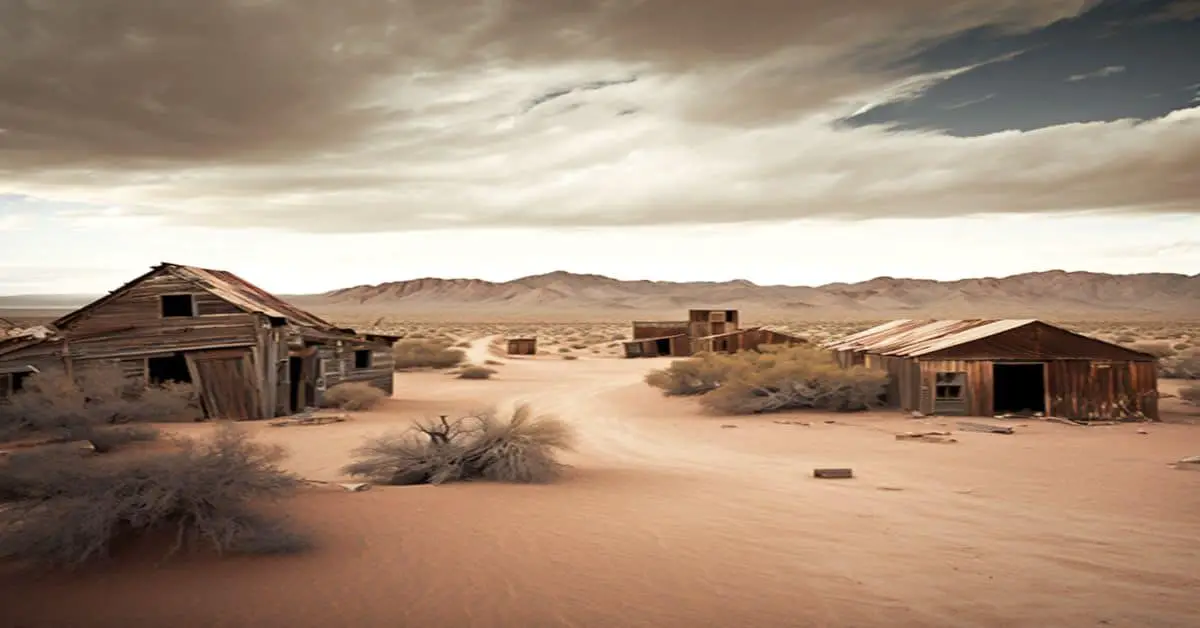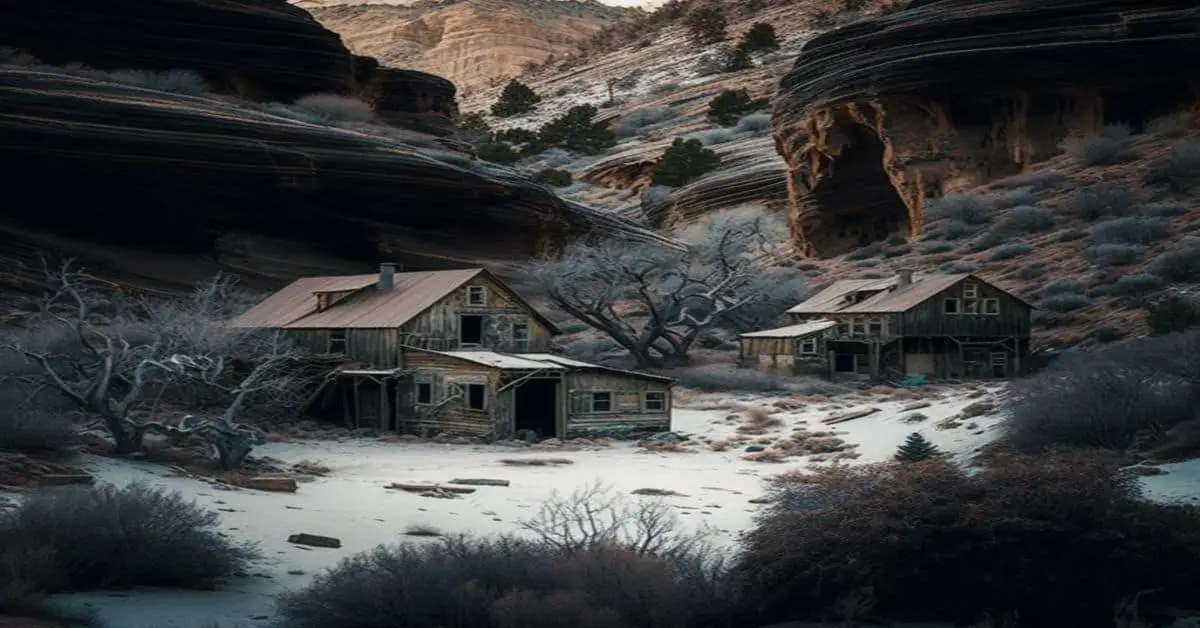Dog Town, California’s first gold rush, was a bustling mining site in the mid-19th century that significantly brought attention to other important mining sites in the state. Though short-lived, Dog Town’s legacy remains a popular spot for gold panning and a fascinating piece of California’s history.
Located just south of HWY 270, Dog Town is now a ghost town, with only partial stone walls of two hovels and ruins remaining close to the cliff bordering Dog Town Creek.
Despite its lack of profitability, Dog Town’s rich history draws in tourists from all over the world, eager to explore the remains of this once bustling town.
In this article, we will delve deeper into the location and history of Dog Town, explore the remnants and landmarks that still exist today, and provide information on the activities available for those who wish to visit this historic site.
Key Takeaways
- Dog Town was California’s first major gold rush to the eastern slope of the Sierra Nevada in 1857.
- Despite its lack of profitability, Dog Town had a significant cultural impact as it was the first eastern Sierra placer settlement.
- Dog Town’s discovery brought attention to other areas like Bodie, Aurora, Masonic, and Virginia City, which became more successful mining towns.
- Dog Town’s remnants consist of partial stone walls from two hovels and ruins of makeshift dwellings along the cliff bordering Dog Town Creek.
Location and History
Situated along HWY 395 just south of HWY 270, Dog Town served as the site of California’s first major gold rush to the eastern slope of the Sierra Nevada in 1857.
The name ‘Dog Town’ originated from the popular miner’s term for camps with huts or hovels.
Despite its small size, Dog Town had a significant geological significance as it produced the largest nugget ever found on the Sierra’s eastern slope.
However, the gold deposits were not extensive, and miners eventually moved on to more exciting diggings.
Despite its lack of profitability, Dog Town had a cultural impact as it was the first eastern Sierra placer settlement.
Its discovery brought attention to other areas, such as Bodie, Aurora, Masonic, and Virginia City.
Dog Town also played a role in the history of California as it was registered as a historical landmark number 792.
Today, the ruins of Dog Town serve as a reminder of California’s rich mining history, and the site has become a popular spot for gold panning.
Remnants and Landmarks
The remnants of Dog Town consist of partial stone walls from two hovels and ruins of makeshift dwellings along the cliff bordering Dog Town Creek, serving as reminders of the settlement’s early days as a placer mining camp.
Visitors can explore the area and imagine life during the gold rush.
In addition to the ruins, several landmarks offer insight into the history of Dog Town, including the Dogtown Bridge, Residence Remains, Grave Maker, Cemetery, and Town Marker.
Popular activities in Dog Town include gold panning, hiking, and exploring the historic landmarks.
While Dog Town was never very profitable, it played a significant role in California’s history as the first major gold rush to the eastern slope of the Sierra Nevada.
Its discovery brought attention to other areas like Bodie, Aurora, Masonic, and Virginia City, which became more successful mining towns.
Today, Dog Town is a California ghost town and a registered historical landmark, attracting visitors interested in learning about the state’s gold rush history.
Visiting and Activities
Exploring the remnants of Dog Town offers a glimpse into the past and allows visitors to return to the days of the eastern Sierra placer settlements. The town’s landmark sites, such as the Dogtown Bridge, Residence Remains, Grave Maker, Cemetery, and Town Marker, visually represent the town’s once-thriving community.
Visitors can view the partial stone walls of the two hovels and the ruins of makeshift dwellings along the cliff bordering Dog Town Creek, which are all that remain of the town’s structures.
Aside from sightseeing, visitors can also experience gold panning in the creek that runs through the town. Dog Town produced the largest nugget ever found on the eastern slope of Sierra Nevada, making it a popular spot for gold panning enthusiasts.
Additionally, hiking trails surround the town, offering visitors a chance to explore the area’s natural beauty. Although the weather can be warm in the summer and cold in the winter, the best time to visit Dog Town is during the summer months to fully experience all the activities it has to offer.
Frequently Asked Questions
What was the daily life like for miners in Dog Town during the gold rush?
During the gold rush in Dog Town, miners’ daily routines involved working in the mines, panning for gold, and maintaining their makeshift dwellings. Social interactions were limited due to the isolated location and lack of permanent structures.
What happened to the miners who left Dog Town for more exciting diggins?
Many miners left Dog Town for more profitable diggins, such as Bodie, Aurora, Masonic, and Virginia City. Their success varied, but Dog Town never became very profitable. How their departure affected the community and relationships within Dog Town is unclear.
Are there any legends, myths, or ghost stories associated with Dog Town?
No documented ghostly sightings or folklore tales are associated with Dog Town, California. However, as a registered historical landmark, it remains a popular spot for visitors interested in the area’s rich mining history.
How did the discovery of gold in Dog Town impact the local indigenous populations?
The discovery of gold in Dog Town impacted the local indigenous populations through the displacement of tribes and significant impacts on culture. This had long-lasting effects on the region, changing the landscape and the lives of those who called it home.
Has any archaeological research been conducted in Dog Town to uncover more information about its history?
Excavation findings in Dog Town have revealed partial stone walls and ruins of makeshift dwellings. Despite being a non-profitable gold rush settlement, Dog Town is historically the first placer settlement in eastern Sierra, bringing attention to other areas like Bodie, Aurora, Masonic, and Virginia City.


